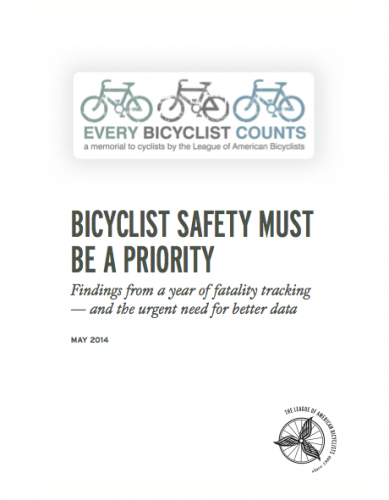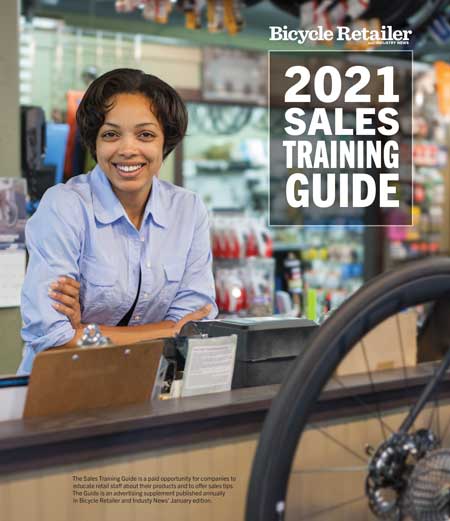WASHINGTON (BRAIN) — For years, friendly bike advocates have re-assured nervous newbies that — despite their fears — it's very rare for bikes to get hit from behind by cars or trucks.
Turns out, maybe the newbies have reason to be nervous.
"It doesn't matter how may times you say, 'well, statistically that doesn't happen very often.' When you read about (a fatal crash) in the paper, that's what happened," said Andy Clarke, the president of the League of American Bicyclists.
The League recently published an analysis of fatal bike accidents in the U.S. It looked at the circumstances of fatal bike accidents and the response from law enforcement, the judicial system and the media.
Among other things, the study found that while hits from behind are relatively rare, they do cause a surprising percentage of the fatal accidents — enough to reinforce the bike movement's historic shift in recent years toward support for bike facilities that are separate from motorized traffic, including green lanes.
The hit-from-behind data was just one part of the League's "Every Bicyclist Counts" report, which is available for download from the League's website.
BRAIN spoke with Clarke Wednesday about the inspiration for and conclusions from the report.
BRAIN: There are already fatal bike accident statistics available, what inspired this study?
Andy Clarke: A couple of things. The most prominent of them is that, because of who we are and what we do, we tend to hear about a lot of the fatal accidents, and it's profoundly saddening and depressing and frustrating to hear of them because of the way a lot of the crashes play out. When talking to family members you really struggle to explain to them why the police are so awful, and why the language that is used in reporting the crashes is so inadequate.
Another reason is that the federal fatal crash data is two years behind what is actually happening and it is very perfunctory and matter of fact and doesn't begin to talk about issues of who is to blame or street design, for example.
(Putting together the report) was a profoundly depressing and saddening thing to do. It was really difficult to do and not something to do by choice, because it's not where we want to focus our attention. As an organization devoted to encouraging cycling, the last thing we want to do is focus on deaths. But the reality is cycling is not without risk and there are things out there that cause fatal accidents and we wanted to understand why.
BRAIN: One of the surprises from the study was the incidents of hits from behind. Why did that show up in your data when other data has shown that those kinds of accidents are rare?
AC: Number 1, we were looking at just fatal crashes. Those crashes where someone gets hit from behind tend to be higher speed crashes and so they are more likely to be fatal.
There are things we can and should be doing to limit (hits from behind) and we have not always been willing as an organization or a movement to say that.
For the longest time it's been an article of faith that we should be taking the lane, and that separated bike facilities are unnecessary ... well, I think we are grown up enough now to say that's not the case. Most people feel more comfortable actually having a paved shoulder or a cycle track or having a buffered or protected bike lane, and those things will reduce the fear and the incidence of being hit from behind. And we shouldn't feel bad or awkward about saying that.
BRAIN: So this data reinforces the movement toward separated facilities?
AC: Yes, it reinforces and validates that approach. There is still a small, tiny percentage of people who think we should not be putting in that kind of infrastructure. They are hanging on to the idea that being hit from behind is not that big of a problem. Well, the data tends to suggest otherwise.
There are still going to be places where there isn't that kind of infrastructure and you are going to need to now how to cope with that. So we are not diminishing the need for the kind of education programs that we have presented and are going to continue to present. But we are saying that infrastructure can and should play a role in eliminating some of the most serious kinds of crashes.
BRAIN: This report focused on one year's worth of fatal crash data, but what is the long-term trend of fatal crashes?
AC: There is good news and bad news. In the last couple of years there's been an uptick in fatal crashes, and that's part of what inspired this report. But since I started looking at this data 25 years ago, there's been a real decrease in fatal crashes. It's about 650 now but I remember the annual number of cyclists killed was up over 800, and it's not been many years since it was over 1,000. So in the grand scheme of things, 650 is still a significant number but it's definitely improving.
BRAIN: Why's that?
AC: Well, that's part of the issue: We honestly have no idea. One of the other trends is the average age of victims of fatal crashes has gone from low 20s back in the early 90s to something like 43 years of age in the most recent years. That's a pretty significant change and yet the data tells us absolutely nothing about why that might be.
Is it because kids are not riding anymore, or is it that kids are riding, but more are wearing helmets? Or is it just because more adults are riding? We don't really know.
Another notable trend is that in the last few years there has been a decrease in the number of overall traffic fatalities involving motorists, pedestrians and others. Since 2008 there's been a 20 to 30 percent reduction in fatalities, but yet the number of cyclist fatalities has gone up in that period.
BRAIN: What did the report find about how the police and the media deal with fatal bike crashes?
AC: Unfortunately, our suspicions were confirmed that police don't report on these kinds of incidents in a constructive manner. When there is a fatal crash and the driver sticks around, you hear their side of story: "The cyclist darted out in front of me." I don't know how we can believe that, there is just no way of verifying that that's what happened.
The police don't have very good systems in place to report these crashes, in part because they are rare. So the forms they use and the processes they use do not adequately represent the situation for the bike. They don't reflect the location of the accident or the street design. And often times the police are working on the assumption that the bicyclist shouldn't have been on the road in the first place. They are pre-disposed to just say the cyclist made a mistake just by being there. That kind of bias is going to take years to overcome.
As for the media, I honestly expected to find a worse situation than we did. But it's still quite likely that the media report will present the story from the driver's perspective and from the perspective that the cyclist shouldn't have been there in the first place. They often report that the driver was fine, which doesn't surprise me, since he was protected by 2,000 pounds of metal. But I guess I should be glad that they can still find the driver.
BRAIN: That brings up hit-and-run accidents, which have been in the news a lot recently. Did this report look at those?
AC: Yes. With fatal bike crashes you often see reports from drivers who say they weren't sure if they hit someone or not. It's pretty hard to hit a car and not know it, but that happens with bikes, so we do suffer disproportionately (from fatal hit-and-runs). And a fifth of all fatalities involve drivers who are unlicensed or uninsured, and a lot of them involve drinking and driving — all situations that encourage drivers to leave an accident. You see a lot of reports where the driver comes forward in the morning, and you have to wonder why there was that delay.
BRAIN: It seems like some of the conclusions in this report would give bike advocates a lot to work on: it validates the creation of separate facilities, points out the need for better accident reporting, and perhaps legal reforms. What specifically do you see coming out of this?
AC: We've already got in an invite to sit down with U.S. Department of Transportation to look at their data collection around crashes to see if they can do a better job of collecting and compiling data.
BRAIN: Do you see specific legislation proposals coming out of this? I know there is a movement in some areas to close loopholes in hit-and-run laws, for example.
AC: Yes, some things can be done on that front on a state level.
There is a lot we can learn from this. We know why a lot of crashes happen, we just need to get out there and do something about them, and this reinforces our determination to do that.
Probably the most exciting thing — which we mention in the report — is the increasing number of cities that are adopting movements toward zero deaths, where no fatalities is the target. That approach has a lot of merit and there are a lot of opportunities to really dig deep into how we can stop these crashes.
We know why they happen - they are not accidents. Certain street designs and certain behaviors and certain end uses cause a huge percentage of these crashes and we can do something about those if we are actually committed to put in the infrastructure, make the legal changes and actually enforce what we have in place. We can get a lot closer to zero than we are today.




